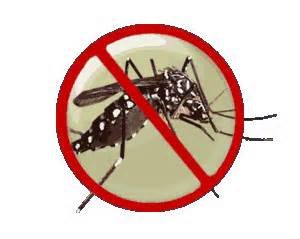[PSS]Dengue Alert
Reference :
http://www.pss.org.sg/whats-happening/pharmacy-news/dengue-alert
—
Jun ,17 2013
Dengue Alert
Dengue is a mosquito-borne disease caused by viruses. Infected person may present with high fever, headache, joint pain and rashes. In severe cases, the person may need hospitalization.
National Environment Agency (NEA) updates the number of dengue cases in Singapore frequently. As of 10May 2013, there are a total of 6396 dengue cases in this year alone.
[Click link to get most updated dengue number of cases]
Dengue
Dengue is a mosquito-borne disease caused by any one of four closely related dengue viruses (DENV-1,-2, -3, -4). These four type of dengue viruses are circulating around the globe. A person infected with dengue fever can be infected as many as four times because infection with any type of DENV provides immunity to that particular type of virus for life, but confers only partial and transient protection against subsequent infection by the other three.
Transmission of Dengue Virus
Dengue viruses are transmitted between people by mosquitoes (Aedes aegypti and Aedes albopictus). Dengue does not spread from person to person. In order for transmission to occur the mosquito must feed on a person during the first 5-days (after being infected by dengue virus) when large of amount of viruses are in the blood.
Potential breeding sites of Aedes mosquitoes include flower pot plates/trays, toilet bowls, hardened soil in plants and domestic containers.
Signs and symptoms
- High fever
- Severe headache
- Severe pain behind the eyes
- Joint pain
- Muscle and bone pain
- Rash
- Mild bleeding (e.g nose and gums bleed, easy bruising)
Symptoms of dengue are usually self-limiting and will clear within two weeks with plenty of rest, drinking lots of fluids and also taking medication to reduce pain and fever. However, with more severe symptoms, patients may need hospitalization and also fluids and electrolyte replacement.
What you can do to stop dengue? Let’s fight dengue together!


For dengue, prevention is the most important step because there is no vaccine available against it. Prevention of dengue means avoiding mosquito bites and also preventing the breeding of its vector, the Aedes mosquito. Prevention of dengue can be divided into measures to prevent mosquito breeding/ feeding anduse of mosquito repellents.
Measures to prevent mosquito breeding/ feeding Before we can eliminate dengue, we must first learn to identify the potential breeding sites of Aedes Mosquito. Aedes mosquito likes to lay its eggs in stagnant water making areas around our home. Examples of some mosquito breeding sites in our homes are flower pots, flower vases, roof gutter, drain, collar of toilet bowl and air conditioner tray.
After learning about Aedes mosquitoes breeding sites, in order to curb dengue, there are many things we can do.
- We must always turn over or cover any water storage containers (empty barrels, unused flower pots, bamboo poles container) when not in use.
- Change vase or flower pots water on alternate days. Clean and scrub the plate thoroughly to remove any mosquito eggs. Wash roots of flowers in vase thoroughly as mosquito eggs can stick on them easily.
- Clear any drain blockages and fallen leaves that can collect water.
- Loosen soil from potted plants to prevent stagnant water from forming.
- Spray insecticides in dark corners like behind curtains, under sofas/ bed and also in roof gutters.
- Avoid going out during early morning before day break and late afternoon after dark because this is the time mosquitoes are most active.
- Make sure windows and door screens are secured properly and without holes.
- Use air conditioner when possible.
- Sleep under a mosquito bed net.
- Wear long-sleeved shirt and long pants.
- Be co-operative when there is any government body who wants to inspect your house or when they come for fogging.
Use of mosquito repellents
Using the right insect repellent is important for ensuring protection against Aedes mosquitoes. There are many types of insect repellents that are available in Singapore and they also come in many forms like patches, sprays, wipes, lotions, bands and also candles. The usual ingredients in mosquito repellents are DEET (N.N Diethyl-meta-toluamide), Icaridin/Picaridin, Ethyl Butylacetylamino-propionate and Citronella.
Points to note when selecting a mosquito repellent are:
- Length of time you need protection and
- Also the active ingredients and its percentage.


Centres for Disease Control (America) believe that DEET and Picaridin provide longer lasting protection than other repellents. The length of protection correlates with the concentration of the active ingredients meaning the more concentrated the active ingredient a product contains, the longer it provides protection from mosquitoes. However, actual protection varies widely and maybe affected by factors such as temperature, perspiration, water exposure and abrasive removal. DEET is the most common ingredient in repellent products but should not be used in infants less than 2 months old. DEET is the usual choice for adults and for small children; parents can also opt for a safer alternative like Citronella.
Precautions to take when using repellent:
- Always follow the recommendations/ instructions on product labels.
- Apply repellent when you are going to be outdoors. Reapply when necessary.
- Use sufficient repellent to cover only exposed skin or clothings. Spread evenly to all exposed areas. Do not use repellents under clothing. If repellent is applied to clothings, wash treated clothings before wearing again.
- Do not apply repellent to cuts, wounds or irritated skin. If skin rash or irritation occurs, discontinue use and wash the area quickly with water and soap. Consult a doctor if necessary.
- Do not put repellent directly on your face. Put on palm first and then apply on face. Avoid eyes and mouth.
- After returning indoors, wash skin thoroughly with water and soap.
- Do not let children handle the product and help them to apply. Avoid applying on their palm to prevent accidental ingestion of the repellent.
References and for further updates on dengue, you may wish to access the following sites:
